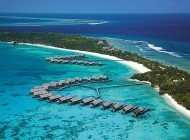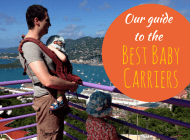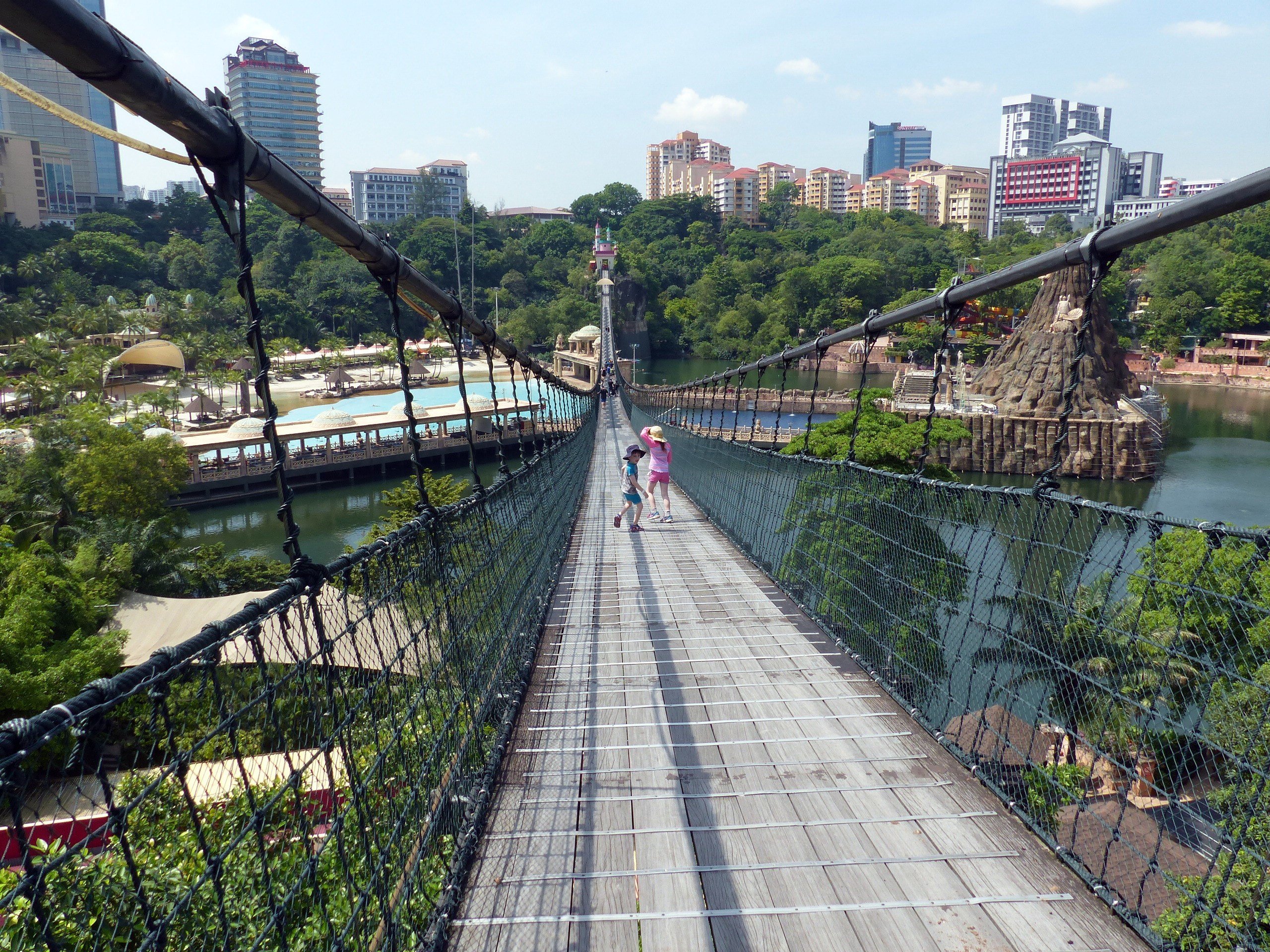A destination that is still on our list is the Maldives. Easily one of the most beautiful destinations in the world, I was super excited when Alana from Family Bites Travel offered to share her family’s experience from their recent trip. You can read her awesome post below to help you plan what to do in Maldives!
When I was planning our route around Asia in 2016 I saw the Maldives on the map and thought “I wish”.
After a few google searches, I realised that it is now possible to travel to the Maldives without having to get a second mortgage. Better still it was obvious that family travel to the Maldives is now encouraged! There are options for all types of visitors, it is no longer just a destination for rich couples on their honeymoon!
In April 2017, our family went to an inhabited local island. In September 2017, we came to compare the experience by staying at the Shangri-La’s Villingili Resort & Spa, Maldives. The experiences were different but both equally brilliant. The following information is a combination of both these trips.
Below you will find our full guide to the top things to do in Maldives with kids. Read about activities in Maldives with kids as well as practical information and advice on where to stay in Maldives with kids.
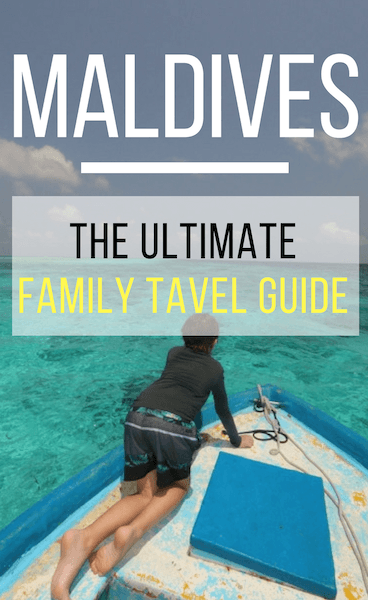
Contents
Islands in Republic of Maldives
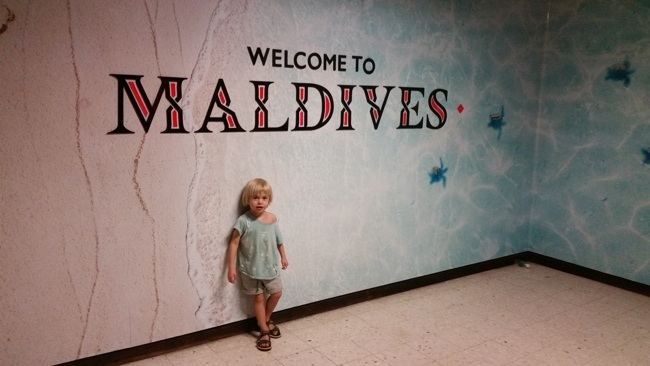
Toddler saw everyone posing in the airport so insisted on the same!
There are 1190 islands that form the Maldivian islands archipelago. There are 3 main categories of islands: inhabited, uninhabited and resort. There is a fourth less commonly discussed island category called the ‘disappeared islands’.
At present, ~200 islands are inhabited by local Maldivians and a further 105 islands are ‘leased’ by a resort. The 900-plus uninhabited islands are used for agriculture by locals or used for day trip destinations and ‘picnic’ islands for tourists.
Prior to 2009, tourists were only permitted to stay on resort islands. When these laws were relaxed many guesthouses and inns popped up on the inhabited islands. There are accommodation options to suit all budgets.
Our Itineraries
In April, like most people do, we arrived into the country via Malé International Airport. The airport itself is on the island Hulhulé, which connects to an artificial island, Hulhumalé, via a causeway. This island was built to accommodate tourists close to the airport, usually while awaiting transfer to another island. As such, there is little more here than several over-priced ‘hotels’.
Having arrived in the evening, we spent our first night on Hulhumalé in a very ordinary hotel for an extraordinary $120 USD. The next day we took the local ferry to Malé before catching another ferry to our final destination – Kaashidhoo. This island is the 5th largest inhabited island in Maldives and is located just north of the Malé Atoll. For the next 14 nights, this island was our home.
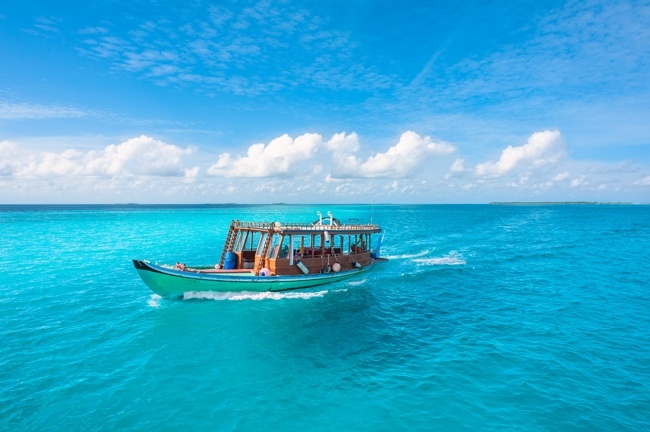
Our actual ferry was much bigger and much older!
For our resort trip to Shangri-La Maldives, we arrived into the country via the other international airport in the Maldives. It is the southern-most atoll of Addu and on the island of Gan. This area of the country is much less developed than Malé and therefore has fewer international flights on offer.
We are now based mainly in Sri Lanka. As such we were able to fly directly from Colombo. There are some countries that fly direct. The majority of air traffic into Gan airport is via a domestic flight from Malé international airport. We were swiftly taken to the resort on the island of Villingili. We stayed for three nights.
Budget
How long is a piece of string? Your budget can be from shoestring to super luxurious. In April, we had a shoestring budget. As we are slow traveling my budget per day is $80 USD/day. I was unable to keep to that budget as my husband joined us and we decided to get 2 rooms. So, our total was $120USD/day.
Most islands will offer tourists inclusive packages. We got one that included all meals, activities, part-time nanny, drinking water, tourist taxes and one-way transportation on the local ferry. The cost of accommodation on Hulhumalé was expensive for what you got.
In April we used ferries on the way to the island. The ferry costs are very low at $1-12 USD depending on destination and the time of day. We paid $250 for a speedboat to return to the airport. I preferred the ferry. A speedboat is based on a per person or per boat cost. So, it can be expensive if you are not sharing the costs. A seaplane will be many hundreds of dollars each way. There is also a tourism tax you need to pay per person per day, so you need to factor in these costs.
During our stay at the Shangri-La Maldives, we were guests of the resort. This resort is marketed and set up to give you a luxurious resort experience. Unlike other high-end luxury resorts I’ve been to, this resort was able to deliver on being luxury yet was completely unpretentious. That is my kind of resort!
The cost varies significantly between seasons and they had a number of villa types available; from the standard villa that was far from standard to an amazing treehouse villa to the extraordinary overwater villas. During the low season May-October, you could snag an absolute bargain. During our stay they had numerous packages and offers such as “pay 5, stay 7 nights”.
Irrespective of the accommodation category you choose, I would caution you to look carefully at the location in relation to the international airports. Sea flights or even speedboat transfers can be very expensive. Shangri-La Maldives has the added bonus of being so close to the Gan airport so transfer costs are negated and fast!
Transportation between Islands
Unless you are doing a trip to the Maldives unaided, you will be most certainly greeted by a friendly face in the arrival hall. For both trips, we were met with our names on a board. With the resort trip, we got the added bonus on the cool drink and cold towel on arrival.
Local Ferry
You should try to match up your flight with the local ferry where possible. Not all island locations have a daily schedule. It is a good idea to at least get advice on the local ferry schedule. It was pretty confusing. They run on certain days and at very odd hours. Irrespective of your location, the ferry, known as a Dhoni is slow moving.
You need to be very mindful on the ferry when traveling with small kids as the front and the back is completely open. We used a car seat after 3-hours of chasing our toddler around.

Back of the ferry was completely open.
You do need to be aware that some islands can be hundreds of kilometers from the capital and can take 12-14+ hours to reach.
Speedboat or Seaplane
Both are easy to organize but expensive if they are not included in the cost of your accommodation. Note that seaplanes will only fly to inhabited islands that have more than 30 guest beds.
In April, I absolutely hated the speedboat we took to get back to the airport. Every bump was painful and the kids were scared. They laughed saying this was a ‘calm’ sea. It was 2 hours in the speedboat versus 5.5 hours on the ferry. Give me the ferry any day!
The ferry network only stops at inhabited islands so you are unable to get to a resort island via the public ferry.
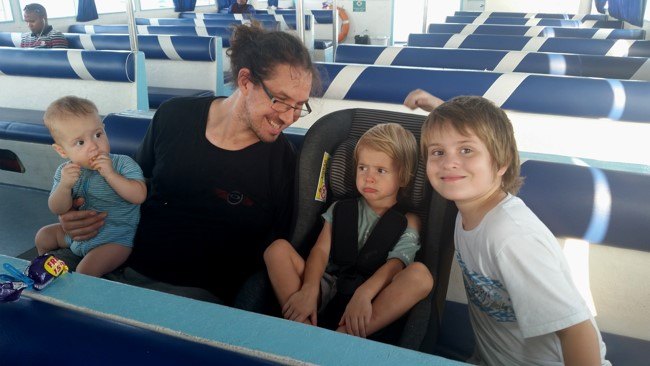
Unhappy toddler. Happy parents.
Although our ferry did have kid-sized life jackets, it appeared to be newer than many others we saw. The local boat we used each day had no life jackets, let alone small sized ones. This was non-negotiable for me as initially I was going to be traveling alone with 3 small kids. So, I bought ours from Australia.
Our trip in September couldn’t have been easier. We were greeted by a Shangri-La Maldives representative, this friendly chap then took us a few steps to an air-conditioned waiting car. Our luggage was taken from us and we didn’t need to worry about it again! Hilariously we drove maybe 50m to the jetty. Here we boarded the boat and got given life jackets. I bought our previously used life jacket but there was no need! They had it covered with a variety of sizes to choose from. The boat ride was about 8-10 minutes. One of the reasons I chose Shangri-La as the transportation was so close. Unlike the ferry that took many, many hours, we were at the resort in 20 minutes flat and it was nothing short of impressive.
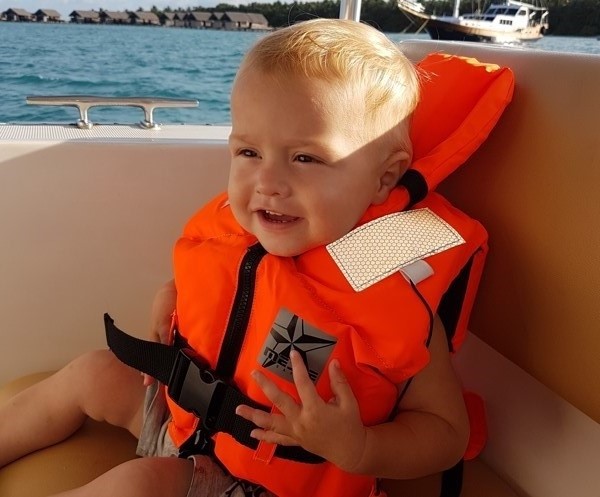
Baby was very happy in his life-jacket!
Getting around Islands
The islands are small. On inhabited islands, locals just walk or use a push bike to get around. Everyone has access to a motorbike and no one wears a helmet.
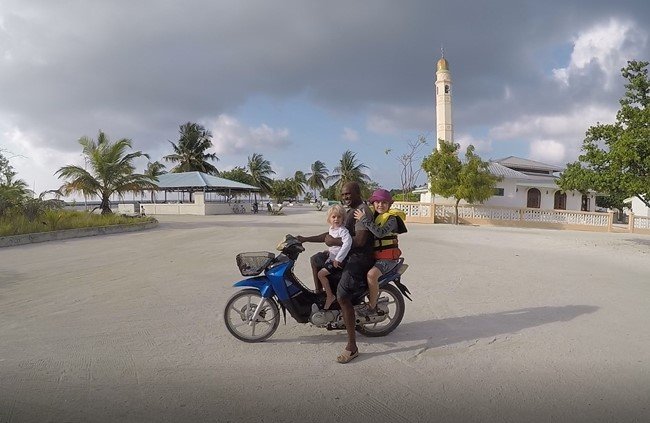
Kid and toddler in “danger zone” heaven
Like most of Asia, local people ride motorbikes but it is FAR from the chaos of the cities. The boys had a few motorbike rides around the island and they loved it. They didn’t have helmets, so I looked the other way and took a deep breath!
It can be very hot so there are also ‘taxis’. These are essentially a motorbike with a small tray at the back. Not very comfortable but they get the job done. A few times we just jumped into the back of a truck to get a lift.
In terms of traveling with kids, having the stroller became tiresome due to the sand. A carrier was handy but it was too hot to use for extended periods.
Getting around the Shangri-La Maldives resort was via bike or golf cart. Either way, if you didn’t choose to, you didn’t have to walk. The island was quite large and the golf cart was a necessity. It rained a few times and they even cover the sides so you are protected. They even installed a baby seat on the bike. I saw they had several bike sizes also. Helmets were not included but there were no cars. The golf carts did seem to zip around but the drivers were very safe and slowed down whenever they saw us.

Baby wanted to keep riding around!
Accommodation
Inn or Guesthouses
To be clear, if you stay on an inhabited island you are not staying at a resort, not even close. You are staying in a guesthouse or inn. I would caution you to make sure you read reviews thoroughly.
We used Airbnb to find our accommodation. We got 2 rooms for ~$55USD/night for both. Admittedly, I negotiated a lower rate as we were saying for 14 nights. A google search for guesthouses or Inns + Maldives will show you just how many appear.

The ‘dining room’ in our accommodation
Resorts
Not all resorts are created equally. I would make sure you look at all the fine details and compare a number of resorts to get the right fit for your family. As mentioned before a resort has exclusive use of “their island”. The Shangri-La is a beautiful resort and Villingili is a beautiful island.
The clientele were two distinct groups; families on the land-based villas and honeymooners/couples on the over-water bungalows. I saw all villa types and I would not feel comfortable having a young child on the over-water villas. Sensibly, all the resorts impose rules to restrict young children on these (>8 or 12 years old depending on the resort). At Shangri-La each villa had a pool. They can install pool fencing around the pool if you have young children. The doors were very hard to open for an adult, let alone a child, so I felt comfortable with not asking for a safety gate.
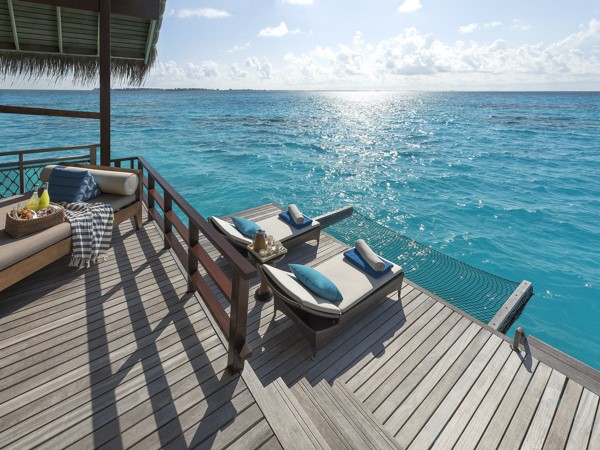
Amazing! But you need older children!
You can read more about the best place to stay in Maldives here.
Cuisine
Most guesthouse will offer a meal package. It is a good idea. The food options are very limited on inhabited islands.
Each meal will come with fish. Tuna is in most meals, even breakfast. If you have dietary requirements you would need to make them clear to the guesthouse.
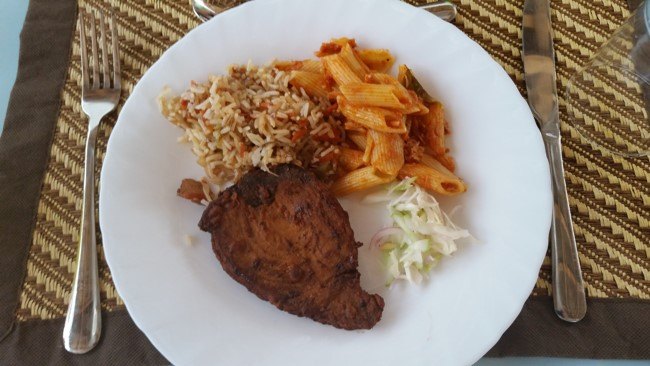
Tuna is in everything!
Many of the local foods are spicy (and delicious) so you need to tell them to reduce the spice for your kids as it was quite hot.

Tuna for breakfast with roti bread. It was delicious.
For resort stays, they do have a monopoly on eating establishments. My tip is to get an all-inclusive package to avoid any surprises. At Shangri-La Maldives, kids stay and eat free under 6. From 8-12 they get 50% off the cost of all meals. There were also many generous family packages that were good value.
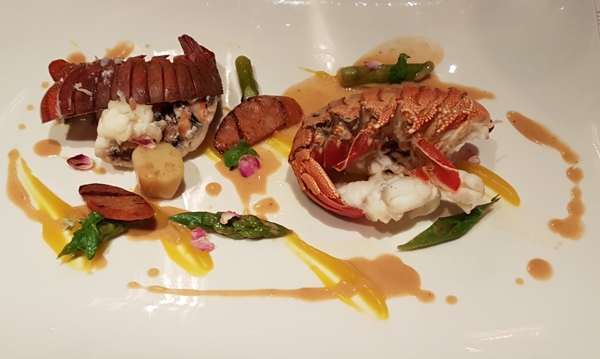
Maldivian lobster – don’t mind if I do!
The food at Shangri-La Maldives Resort was delicious. The servings were massive and enough to feed at least 2 adults. The kid’s meals were also wonderful. You got a real choice as well. Not just the standard fried food or chicken nuggets.
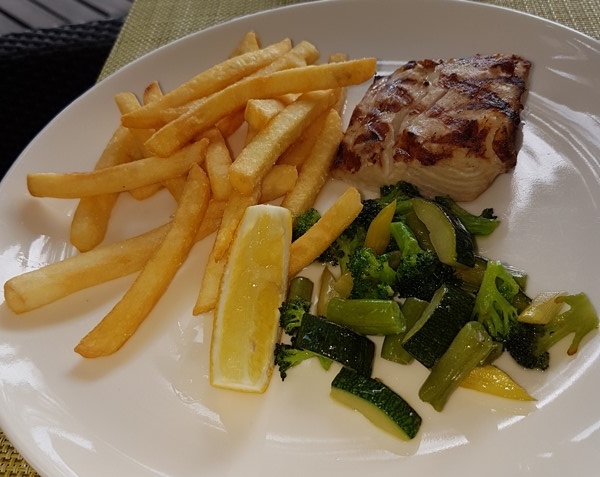
A free kids meal!
The breakfast, like all Shangri-La’s buffets, was epic. I took a few snacks from the buffet and it was enough for lunch. The waffles and crepes were a real highlight!
There are 3 large restaurants on the island. The main cuisines on offer were local Maldivian, Chinese, Middle Eastern and Indian. The resort also had a dedicated sommelier. You cannot get bored with so many choices. It was the complete opposite to the local island, where I was so over tuna in every single meal. It was the biggest difference between the two experiences in the Maldives.
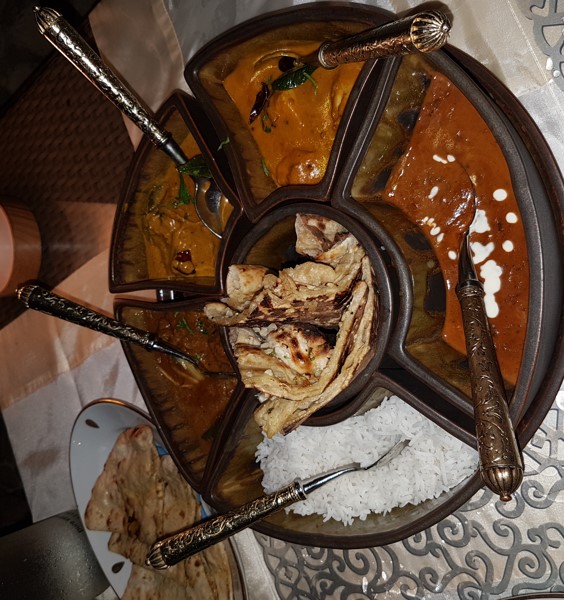
Indian meal for “Two”. This was easily enough for 3-4 adults!
Top 10 things to do in Maldives with Kids
The following list is a combination of both the inhabited (local) and resort stays. Prior to our resort stay, I assumed the only way to engage with local people was to stay on an inhabited island. I realised this was not totally true. You can do local island tours at Shangri-La Maldives, something, that is not possible at many resorts. The workforce was also made up of mostly Maldivians who lived in the local islands. They were very happy and clearly loved their job.
1. Dolphin Cruises
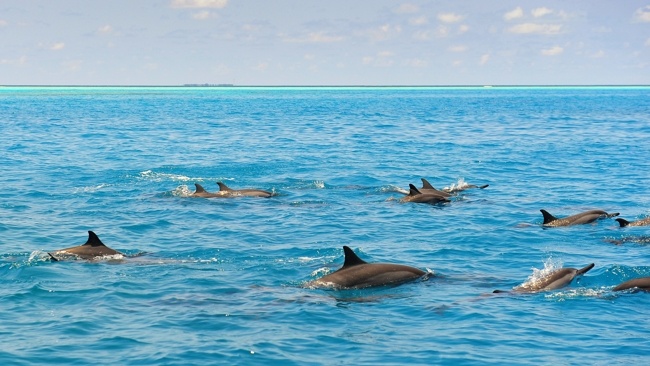
Spinner Dolphins in Maldives – we saw this daily!
Dolphin watching is one of the activities in Maldives offered on all islands, even if not formally. There are 4 different species of dolphins present in Maldives and we saw Spinner Dolphins. Unlike the other incredible sea creatures that you might see – think whale sharks or blue whales – dolphins are common and present year-round. The local people respect and care about their well-being and this was a welcome surprise.
We did a specific dolphin cruise three times on our April trip but we were fortunate to see them on other boat trips too! These cruises were a major highlight of our trip. Even our 3-year-old absolutely loved it.
Around Kaashidhoo the ‘local’ pod numbered around 100 dolphins in size but in other parts, they can get into the thousands! We never saw them all together – the baby dolphins usually hung around the shallower waters near the reefs while the adults were in the deeper water.
Also, only a quarter or so are swimming at the surface at one time and our underwater video footage is a testament to that.
They are playful and curious creatures but be under no any illusions as to who is in charge! Several times we watched them perform amazing acrobatic tricks from a distance only to have then stop and swum away when we got closer. If they were inclined to do so, however, they would ‘play’ near the boat and it was nothing short of spectacular.
I also went on a resort organised dolphin cruise. The pod was so chilled out and we got to cruise along with them for over an hour. It was a very different experience as the boat was so much bigger and brand-new! The pod was massive with at least 300 individuals and many babies. Unlike the local island dolphins, this pod “played” with us. I whistled to them and they looked at me!
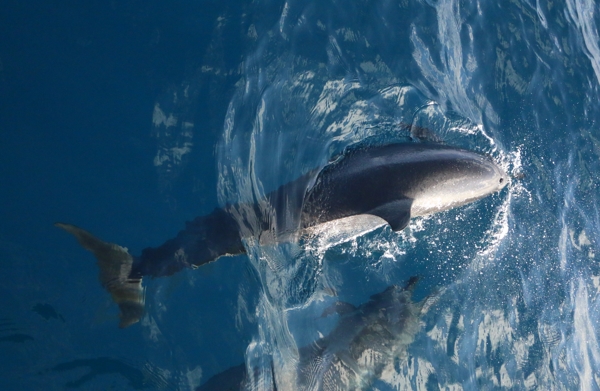
Made 300 new friends.
2. Finding Nemo: Snorkeling
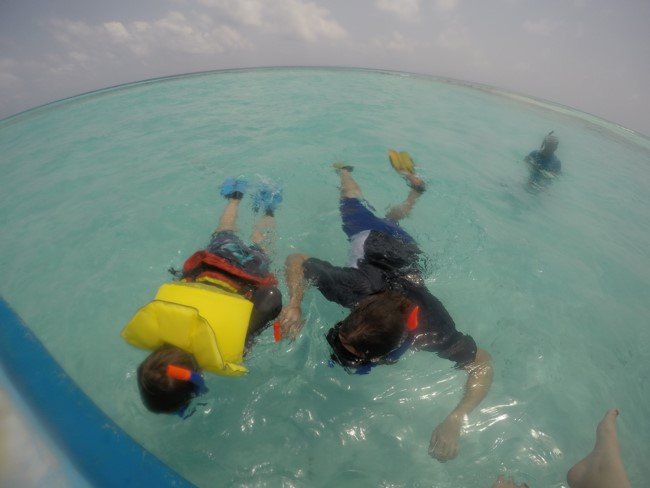
Our 8-year-old snorkeling
The water in the Maldives is so clear. Even on average days, the clarity of the water surpassed anywhere I have ever snorkeled. The visibility was at least 20 meters!
There were several snorkeling spots around Kaashidhoo and all abilities are catered for. Most islands have a similar geography. The shallower areas within the inner reef are an excellent place for learners and the less confident. Our 8-year-old started here but by the end of the trip was out with us on the outer reef where the sea floor simply vanishes into an abyss! Unlike many of the resort islands, there is no ‘house reef’ but it was only a short 5-minute boat ride to the reef. We chose an inclusive package and could snorkel every morning. Beware that if you choose to pay for things individually your costs could add up quickly as you will most likely want to be heading out again and again.
The marine life was abundant and plentiful and I was lucky enough to spot a turtle! To my husband’s dismay there were no sharks to be seen.

This little guy thought I was his mama!
Unfortunately, like all reefs in the world, the Maldives has been affected by coral bleaching. Our host informed us that this was only a recent phenomenon. Parts of the reef were recovering but it is far from its former glory.
We went on a snorkel trip during our resort stay. The main difference was the fact the boat followed you so you didn’t have to do the “hard” swim back to the boat! I saw 2 turtles, a sting-ray and a small reef shark. There were so many fish. I was heartened to see the coral was starting to regain some color. The Shangri-La also offers a wonderful program where you can build a coral support and replant a coral reef. You can then get updates to see how your coral is going.
3. Sandbank Swimming
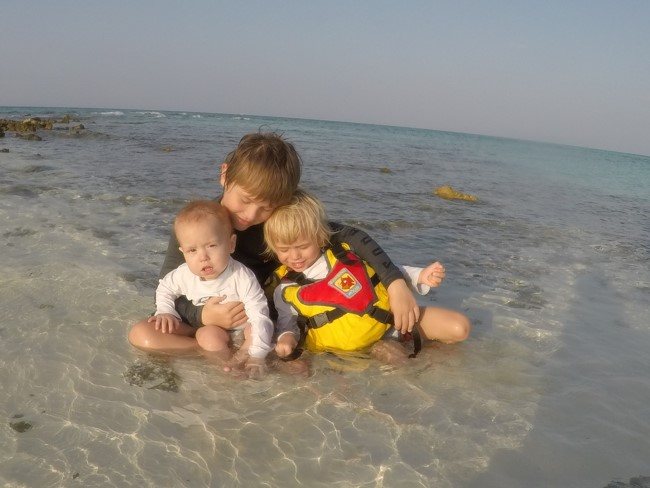
Our boys on the sandbank off Kaashidhoo
Many of the Maldivian islands are themselves atolls. Within them among the calmer waters are often sandbars. Kaashidhoo is one such place.
It was a surreal experience- we were in the middle of the Indian Ocean in the clearest of water you are ever likely to see. The sun was setting and the water was warm! The level of relaxation was on another level. The baby was in heaven and didn’t want to get out.
Take care if there are rocks or coral present. I cut my foot on the rocks and it is still healing, 6 weeks on! I would recommend people take reef shoes.
4. Collecting Crabs & Crab Racing
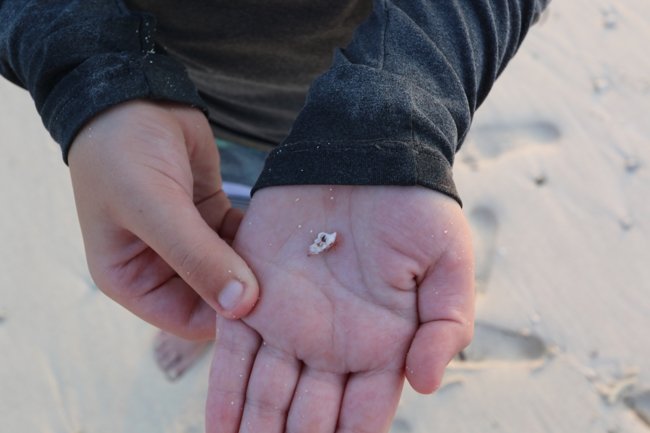
Kid and a tiny hermit crab
One of the things to see in Maldives is the hermit crabs. The boys loved them. We went to a few beaches on Kaashidhoo and one was literally covered in hermit crabs! You had to watch where you walked there we were so many. As you stopped, the beach started to move!
Sized from a couple of millimeters to up to a few centimeters they kept our kids entertained for hours.
At the resort, we did crab racing. We went to the beach and collected some hermit crabs. The kids absolutely loved this activity. In our specific villa we had literally hundreds come out at night. The kids were in awe of these little guys.
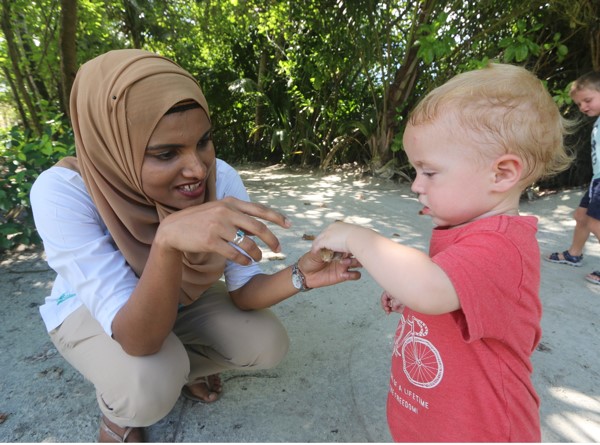
Crab Racing with Cool Zone Kids Club in Shangri-La Maldives
5. Boats, boat and more boats: Captain Kid
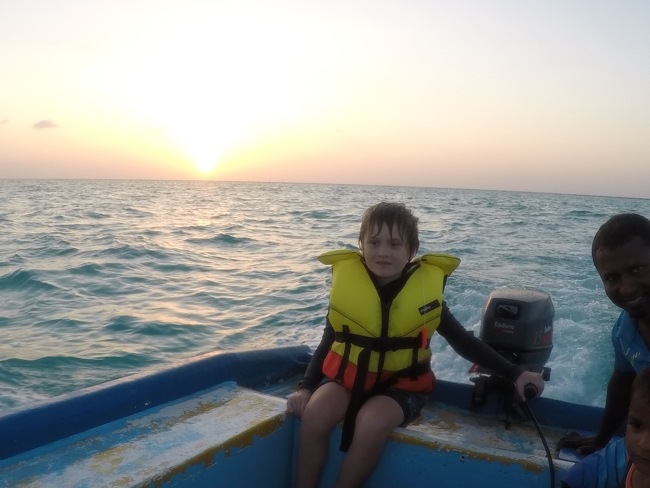
Captain Kid!
Just as most of us urban dwellers catch the train or bus, Maldivians catch a boat. There is lots of water, so boating is one of the things to do in the Maldives that you must do! It’s a bit more exciting for the Maldivians though – we saw jumping tuna, flying fish, dolphins and birdlife on our boat journeys.
We spent time on 4 different types of boats: public ferries, a modern speedboat, a small fishing dinghy and a larger fishing boat. I’m not sure if I grew my ‘sea legs’ though as I got seasick more than once.
We also saw a ‘Safari boat’ being constructed on the island. It’s interesting to see how things are done in other parts of the world, to say the least.
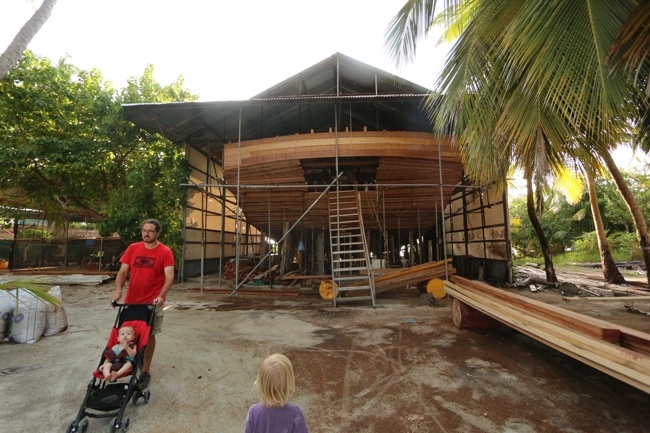
Boat building on Kaashidhoo
On the fishing dinghy, our 8-year-old was put on skipper duty after a quick 30 second tutorial on how to drive the boat! I had to turn off my OHS and mum-brain to allow this to happen! The locals were so casual about this and in the end, it was good for him in helping develop his confidence. He absolutely loved it!
6. Game fishing

One of Maldives things to do is to try to catch really big fish! We were hosted by local fishermen. They went out every night. We joined them to try to get a very prized catch in the Maldives – Yellowfin tuna! It was not what I was expecting though with no rods, reels or fish-finders in sight. In the Maldives, it’s all done with intuition and hand lines! There is an art to it.
We pulled up alongside a commercial fishing boat and the speed and fluidity of the fishermen was something to behold. On our boat, we could pull the line in when the fishermen had ‘taken control’ of the situation.
Young ones and the faint-hearted need to be warned – the process is confronting. The Yellowfin tuna are large fish, some more than 1 metre, and in order to get them out of the water a large hook is used. There can be a lot of blood, I repeat, a lot of blood.
When onboard the fish is quickly killed by a hard blow to the head and this results in a seizure which can last several minutes. I hid up the front of the boat when I knew it was coming the second time. It wasn’t nice. Fish that were not sought after were returned to the water.
7. Freedom and friends
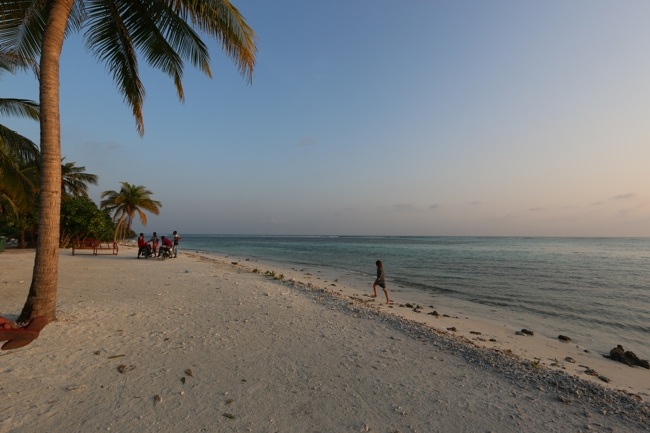
Beach at Sunset on Kaashidhoo
The kids were a source of wonder to the local people. Remembering that inhabited islands have only been ‘open’ to tourism for a short period.
The boys were treated like kings! They ran into shops and they got given lollies. They ran around the streets and everyone wanted to touch their hair. They ran into people’s gardens and were invited inside. Our baby was taken from our arms when anyone had a chance to have a cuddle. The local kids would come and talk to us in English and wanted selfies with all the boys. It was so nice to see the boys having the freedom to just be kids.
Not everyone looked friendly, initially. Often, they would come and just stare at us. It can be confronting having a group of people just stop and stare. As soon as we smiled at them they would come over.
Language was a barrier but we would still communicate. A smile, a wave or a point or a show of fingers was enough. Just a short 50 metres to the shop would mean multiple stops and photos. The kids made friends with kids and adults alike.
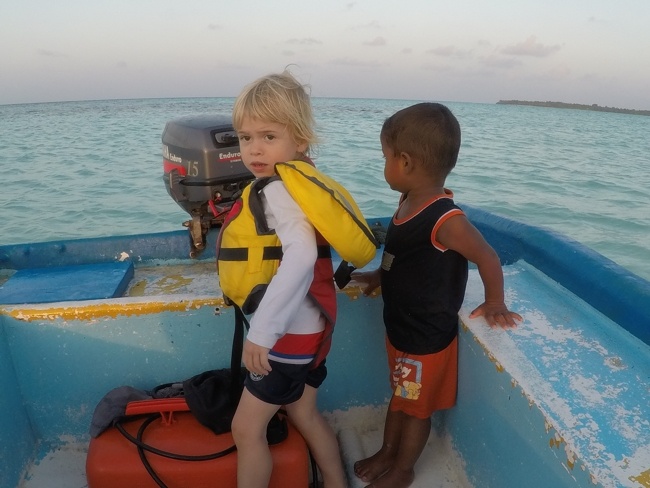
Toddler making friends with our host’s son
This is the one main thing you miss out on if you go to a resort on the Maldives. Getting to know the local people, you make friends and have some autonomy in your holiday decisions.
We met lovely caring Maldivian people where we stayed who got us a wonderful babysitter. She invited us to her home on the final day and it was a major holiday highlight. Having ‘Noni’ allowed us adults to participate in island activities but also to have some alone time. We knew they were being well cared for and we could enjoy the water activities!
The kids got to play with local kids and meet so many of the people. They were like celebrities and everyone knew their names.
9. Froglets to Froggies and feeding fishes
At the resort, we were able to find frog metamorphosis in all its glory. There was a pond full of frogs mating and at variables stages of growth. They were teeny tiny and so cute! The kids loved watching them swim in the water. I am unsure what species they were but there were thousands in the pond!

Froglets to frogs
Although feeding fish is not uncommon, unfortunately, it is offered in kids clubs in the ocean to the marine fish. This is seemingly innocuous activity is very detrimental to variety of fish and the already suffering coral. When humans do this activity they will encourage the aggressive fish, they in turn scare away all other species. Often the coral will then die as the symbiotic nature of fish and coral is disrupted.
I loved that the Shangri-La Maldives did fish feeding in the pond. The fish were very clever and who knew who had the food! They would stalk you along the pond. Again, the kids had a wonderful time.
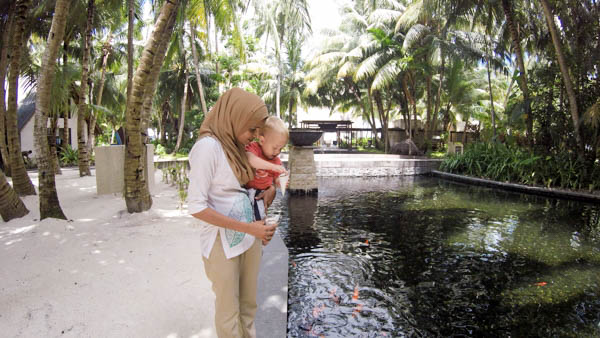
Feeding the Fish
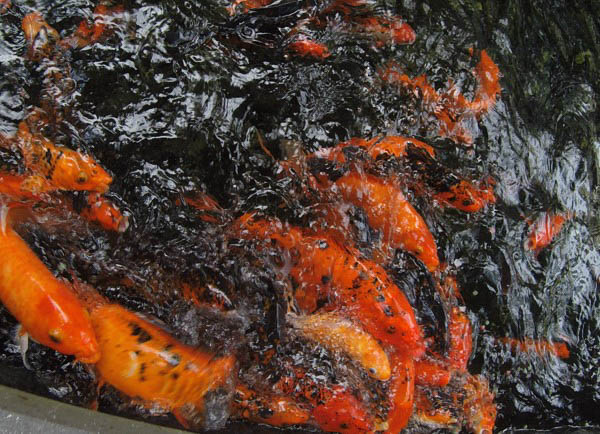 The baby dumped the entire cup into the water and it was a feeding frenzy much to his delight!
The baby dumped the entire cup into the water and it was a feeding frenzy much to his delight!
10. Technology Detox: Reconnecting as a family and kids club
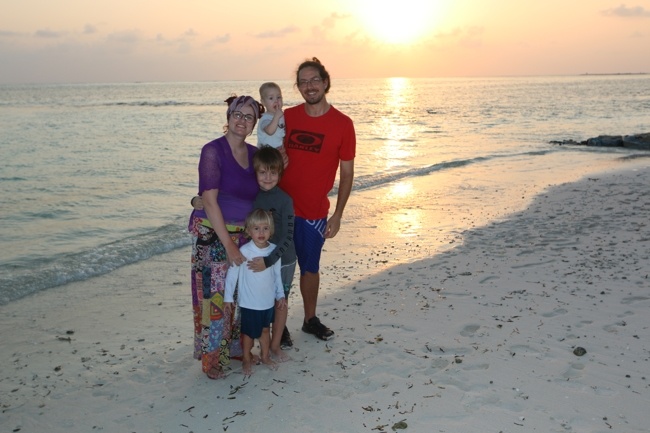
Family time on the beach
It was so nice just to be together. My husband must remain in Australia while we travel. Being in the middle of the Indian Ocean with no phone reception, no television and limited internet meant we could reconnect properly.
Re-connection is very important for families! However, so is time out for the parents! I love kids clubs, namely so I can get a massage (or 10) and have a short break from being ‘mum’. Before I look at anything else I will look at the kid’s club facilities at any prospective resort. Shangri-La’s kid’s club is called the Cool Zone and they are the next level in fun.
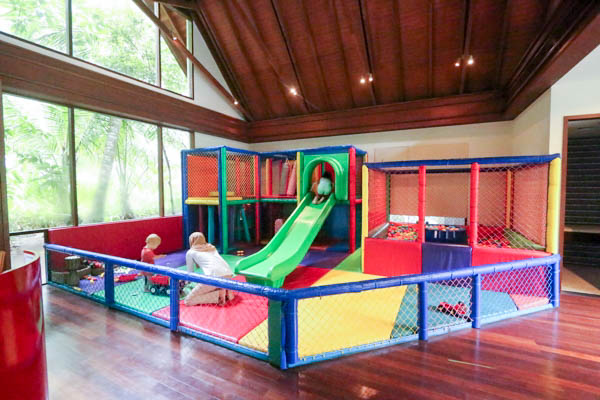
Play area inside the Shangri-La Maldives kid’s club
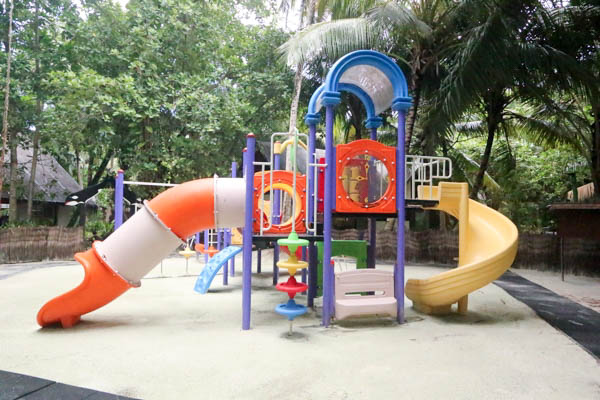
Outdoor play area at Shangri-La Maldives kids club
It is very true that not all kids clubs are created equally! The Shangri-La Maldives had a very extensive list of daily activities. Many of these were outside and typically inspired by Maldivian culture or traditional activities. Coconuts were front and center for craft activities. The Cool Zone has an inside play area, a dedicated craft area and the required ball pit. There was also an outside play area. They also combined their program with the resorts onsite marine ecology center to give an extra layer of education to the fun.
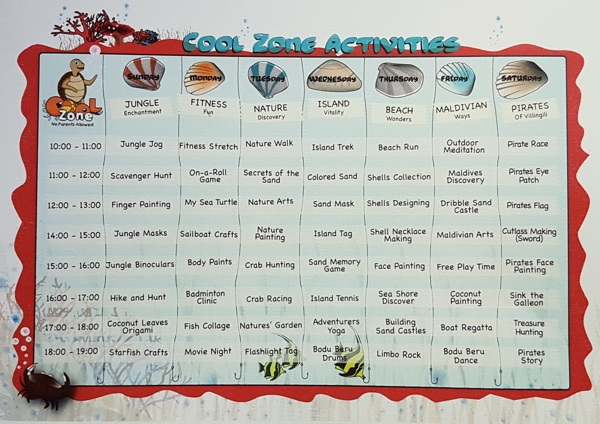
Kids club activities at Cool Zone Shangri-La Maldives
Things to remember
Money and ATM access
Most local traders will accept USD or Maldivian Ruffiya (MVR). Currently, $1 USD = 15 MVR. Change is typically given in MVR. There are ATMs and money exchangers on Malé and at the airport. If you head out to an inhabited island bring cash as ATMs are scarce; we had no access to funds on Kaashidhoo.
Beware that the USD you might tender must be in pristine condition or it will be refused. I know because it happened to me!
Religion
The Adhan (Islamic call to prayer) occurs 5 times a day. It is brief compared to some other Muslim nations but pretty much everything stops for at least half an hour.
During the Islamic holy month of Ramadan, all local people are fasting from sunset to sundown. The dates vary year to year as it is based on the lunar calendar, but often it is May or June. You should refrain from eating or drinking in the presence of Maldivians during this time. If you are staying at a resort this would not apply.
Visa
Most countries can get a visa on arrival and it is free. Your visa is valid for 30 days. You may need proof of a return ticket, evidence of enough money to cover your trip and at least 6 months on your passport. Although, the only thing we needed was the address of our guesthouse.
Our toddler was being naughty. A passport control person approached and I thought I was just about to be scolded for not controlling my unruly child. She pulled us into the VIP lane – no line!
Modesty on Inhabited Islands
Outward displays of physical affection are considered an affront in Maldives. Signs explicitly state that holding hands and kissing in public is a civil offence! My 8-year-old asked me if that meant he couldn’t give me a hug! Was very cute and I explained it was for adults only. Kids can do as they please with kisses and hugs
Female attire is also under scrutiny. As a visitor, you are not expected to be in a hijab or niqab. Aim to cover from your elbows to your knees as a measure of respect to your island hosts. Away from the island, you are afforded a little more liberty.
For swimming, bikinis are only allowed on resort beaches or some islands have set up “Bikini Beaches” to allow tourists to swim in what they like. Local swimwear with long legs and sleeves can be purchased cheaply (I paid $15 USD) and is actually a really good idea given the sunburn risk.

Alcohol
Outside of the resorts alcohol is illegal. If you bring any duty-free alcohol in with you, it will be confiscated at the airport. You may be liable for a fine also.
Baby supplies
Portacots and highchairs are not commonly used unless you are at a family-friendly resort like Shangri-La’s Maldives. In April we bought our own travel cot with us. Having a baby sling or carrier was also very handy. We did bring a travel stroller but it was useless on the sandy roads.

As all islands are very small you should bring any essential items like baby food. You could get nappies and formula on the Kaashidhoo but they were costly and the nappies were very thin. I have avoided buying baby wipes in most Asian countries as they have led to nappy rash. All toilets have a hose that you can use to wash the baby.
Shangri-La did have access to nappies and other baby items to make your stay easier. If you required items like nappies and formula longer term I would bring them from home.
Healthcare
The level of healthcare facilities available will depend on the island. I suggest you google this prior to arriving if you have any chronic health issues or a clumsy toddler like we do!
We were on the 5th biggest island in the entire archipelago with nearly 2000 inhabitants. Our toddler ensured we got the entire tour of the Kaashidhoo hospital as he sustained a deep gash next to his eye. They had a doctor who had limited English but lots of pointing and charades lead to a good level of care.
Should higher levels of care be required, people are transferred to Male by “Sea Ambulance”.
The Shangri-La Maldives had a dedicated medical practitioner available 24 hours a day. Luckily this time no doctor was required!
Environment
Heat
It is very hot and humid in April and less-so in September. For both trips I was grateful for air-conditioning. It’s easy to get sunburned. I got severely sunburned on my legs in April, so badly they blistered. Rather than constantly applying sunscreen I would recommend using long sleeved ‘rashies’. They’re great for protection from sunburn and you can cut back on sunscreen which is good for the reef and marine life.
In September, the heat was much more manageable and the humidity was much lower. I still managed to get sunburned arms, even with sunscreen on!
Irrespective of the time of year, I would give the following advice. It is mostly common sense but I tried to limit the kid’s exposure to the sun from 10 am to 3 pm. I gave them water and fresh juice at every chance. It got to a point where my toddler would say “enough enough” when I gave him a drink!
Taking a hat and covering up is vital. I took cotton long sleeved tops for the boys to wear. I would bring a high SPF sunscreen with you from home. Although we could get some on the island I wouldn’t assume you purchase things like sunscreen, particularly on smaller islands.
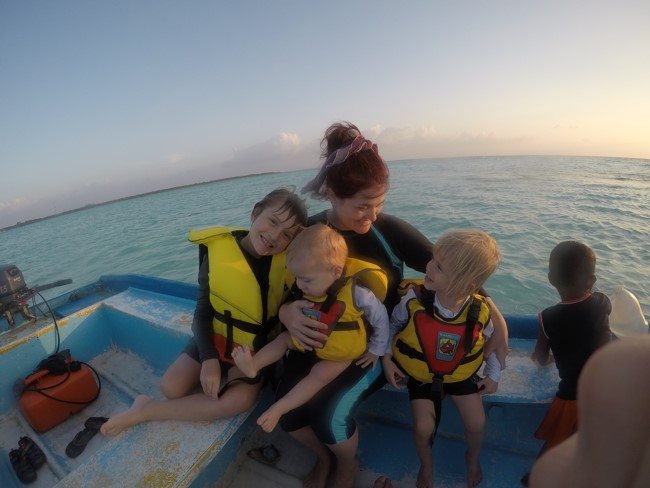
Weather
We visited at the end of April and only experienced one extreme downpour. The monsoon season in the Maldives is from mid-May to start of November. During this period, there can be very rough seas making water transport potentially dangerous and water activates unpleasant. I stayed at the resort at the end of September and it was wet, rainy and a little rugged at times. We experienced a few thunderstorms that left as dramatically as they arrived. It did get very windy during these storms. Luckily, it was brief and did not significantly affect our stay.
Water
Tap water is obtained from underground sources on Kaashidhoo and other islands. It was stinky but you got used to it. Either way, do not drink the tap water!
The water on the resort island of Villingili was very clean. The resort filtered and made their own safe drinking water and bottled it themselves. They save over 200,000 plastic bottles per year from this!
Rubbish
In April, we saw many locals throw their rubbish straight into the sea. Pollution was a real issue around Male. Coming from Australia I was so shocked to see a woman throw an entire dirty nappy into the sea! It was not an isolated incident.
The resort islands will not have rubbish issues like inhabited islands as they have proper waste management. Kaashidhoo seemed to have a much better grasp of the environmental impact of littering. They cleaned the beaches regularly.
Our guesthouse host said many Maldivians are simply uneducated about the issues of littering. It is something to remember if you are planning on going to different local islands. Some will be cleaner than others!
In September, although the resort was so close to 4 inhabited islands, the area had very little rubbish. I saw 2 plastic bottles on the beach. Unlike Male where we saw hundreds of bottles and rubbish in the waters surrounding the island and airport. The Shangri-La Maldives also actively reduces its use of plastics and other single-use items.
Coral bleach & global warming
Like the rest of the world’s coral reefs, Maldivian coral has been hit hard by coral bleaching. You could see signs of the coral trying to recover. As visitors, we can help by minimizing any impacts on the reef by not using sunscreen or bug spray prior to snorkeling. It goes without saying we shouldn’t stand on, touch or break off the coral.
As many people probably are aware, Maldives are arguably one of the most susceptible countries in the world to being lost to rising water levels. Our hosts said the inhabited islands have already started to ‘reclaim land’. They do this by digging up sand from one area in the atoll and building up the sides of the islands. That obviously has a raft of environmental issues associated with it.
Safety
You do need to be careful on Malé. They have a history of violent incidents. I would not choose to stay there. We felt perfectly safe on the inhabited islands even though they were having a local election at the time.

Our verdict
We had an amazing time in April. The Maldivian people are warm and welcoming; we felt like we were leaving family at the inhabited island. I would encourage everyone to look beyond the resorts and get to know the real Maldives.
Like anywhere in the world there are upsides and downsides. It is not perfect. The environmental issues were most obvious but there are people passionate about their country and striving for change.
The resort stay we had at Shangri-La Maldives was glorious and luxurious. It was at times I felt some things were just too indulgent, specifically the food serving sizes. Overall though, we had an absolutely wonderful stay and met some beautiful staff.
We are looking forward to going back again the future. My ideal itinerary would include both an inhabited and resort stay.
You can follow Alana and her families travels at Family Bites Travel and find them on Facebook, Instagram and Youtube.
Tags: Maldives Travel Blog





